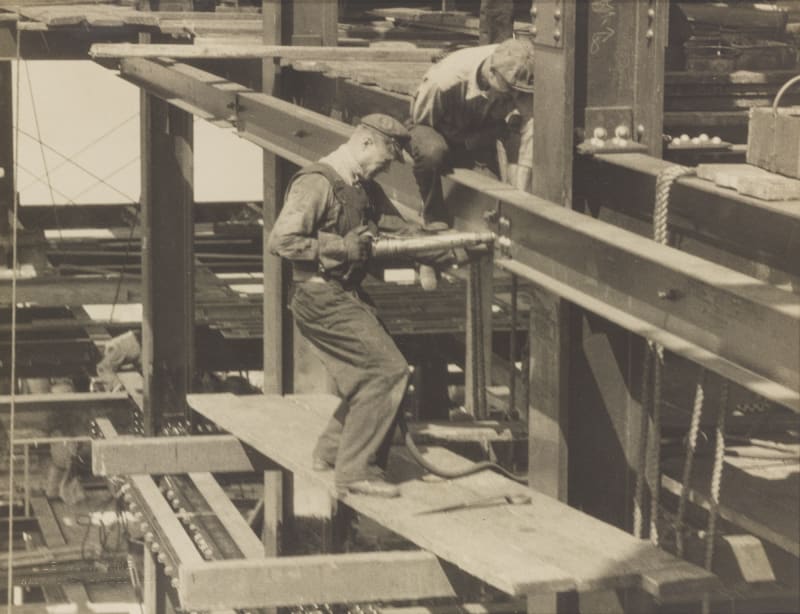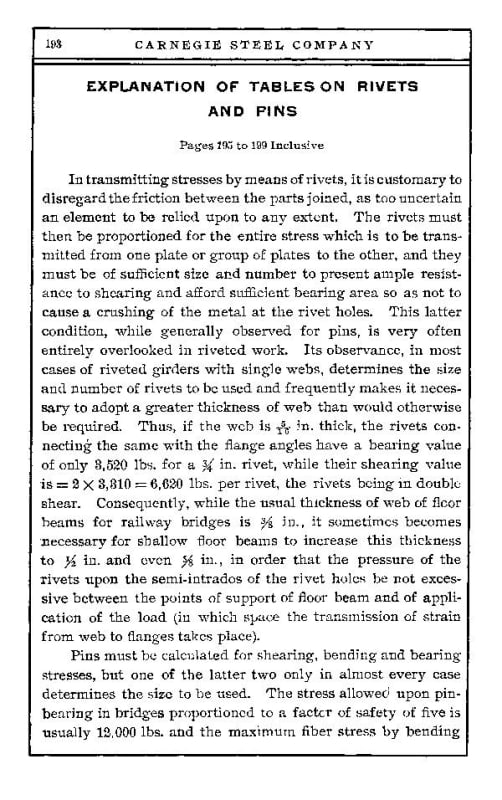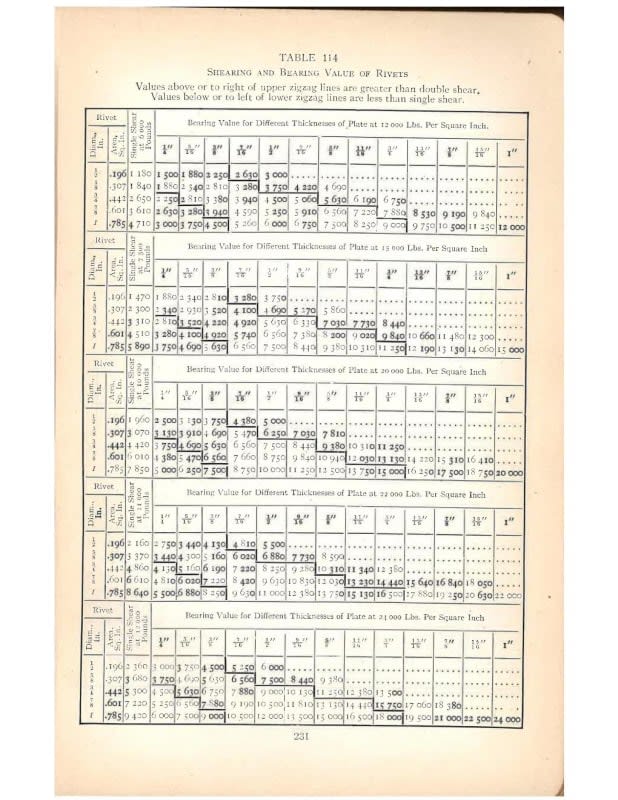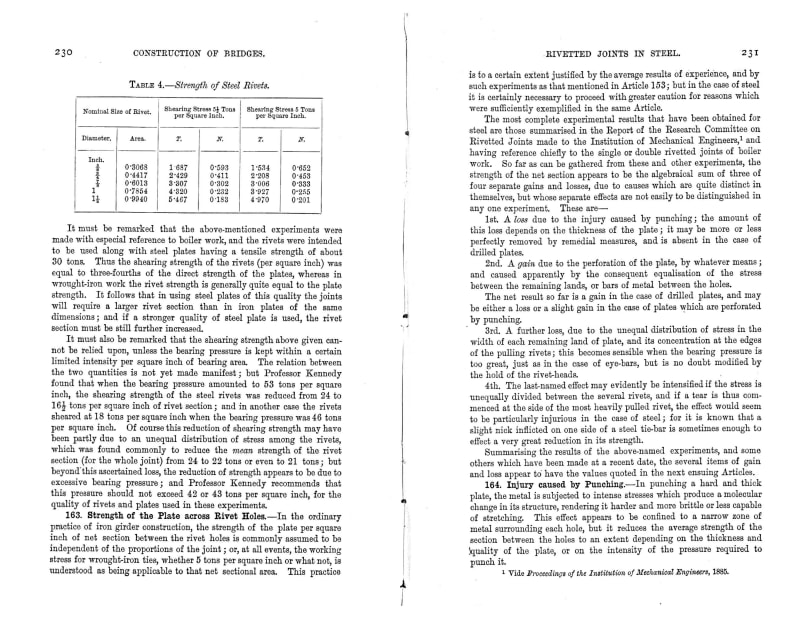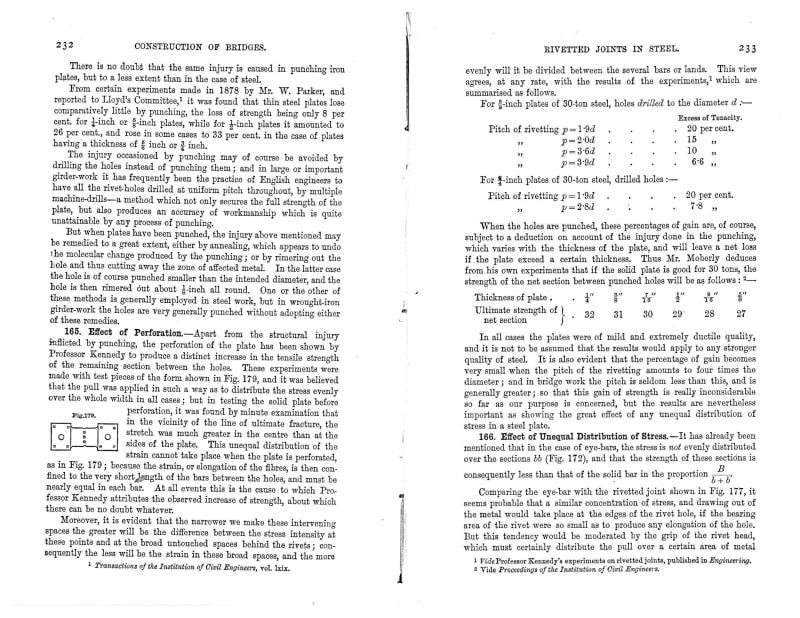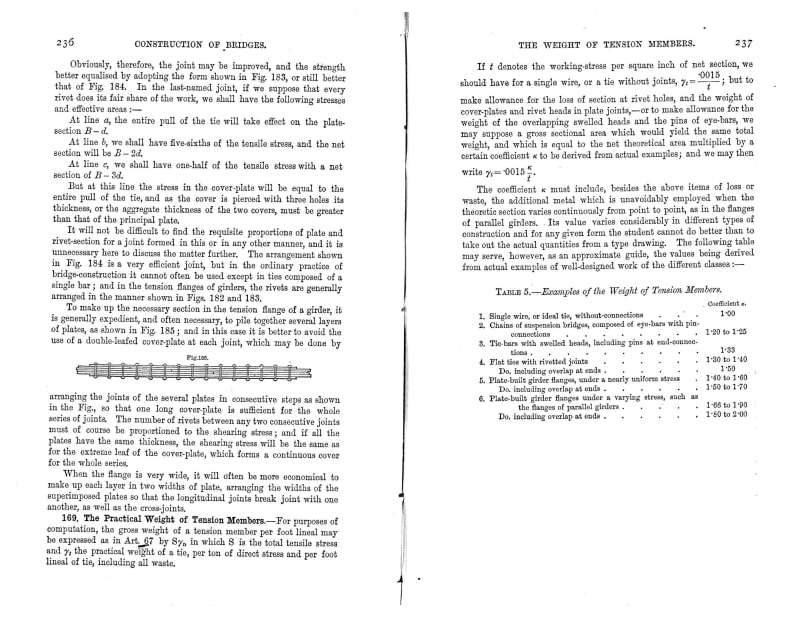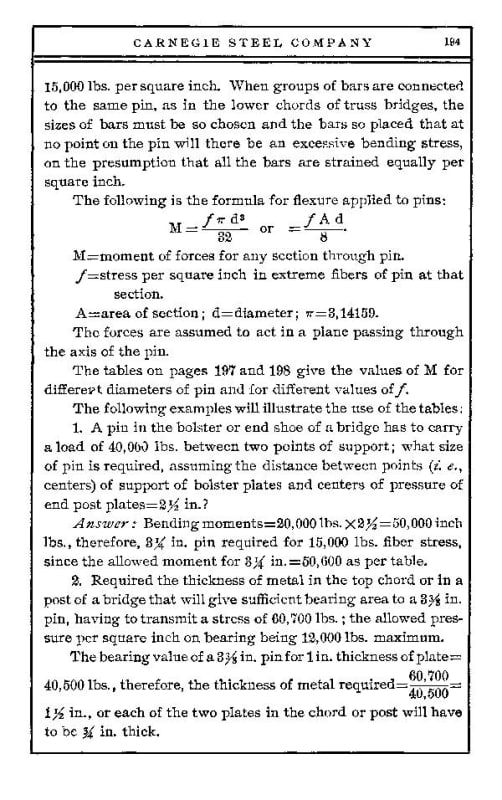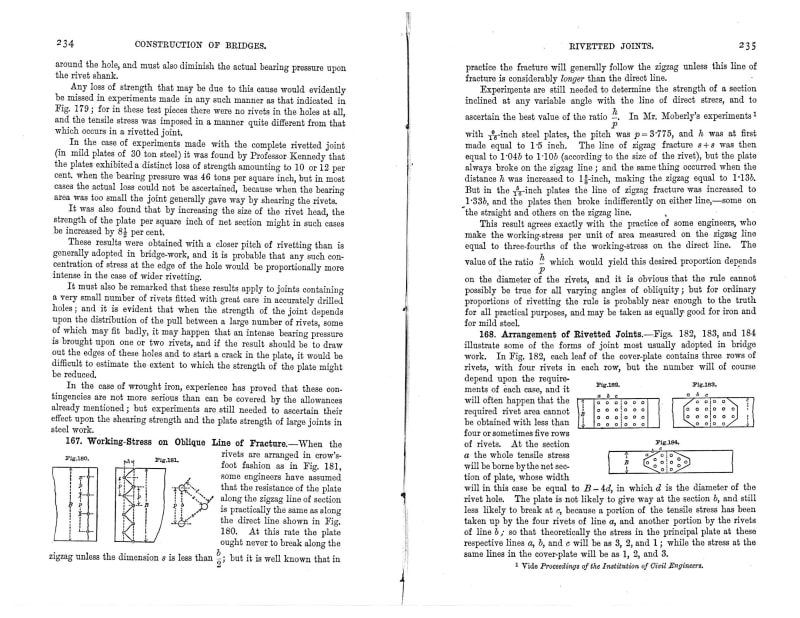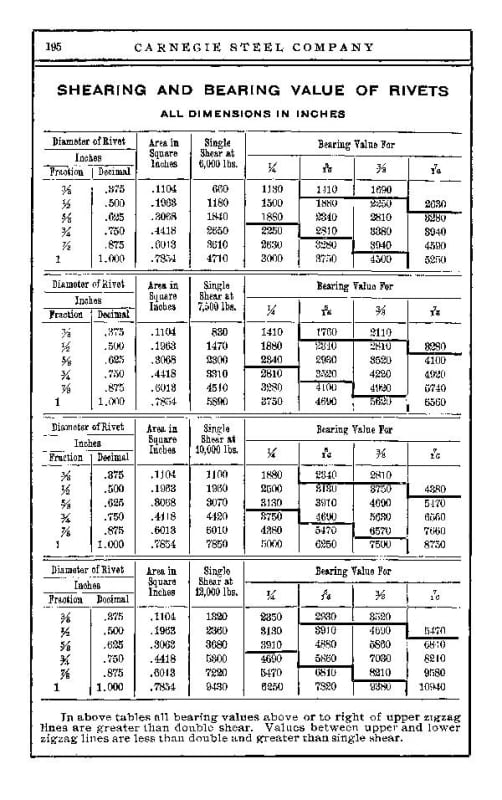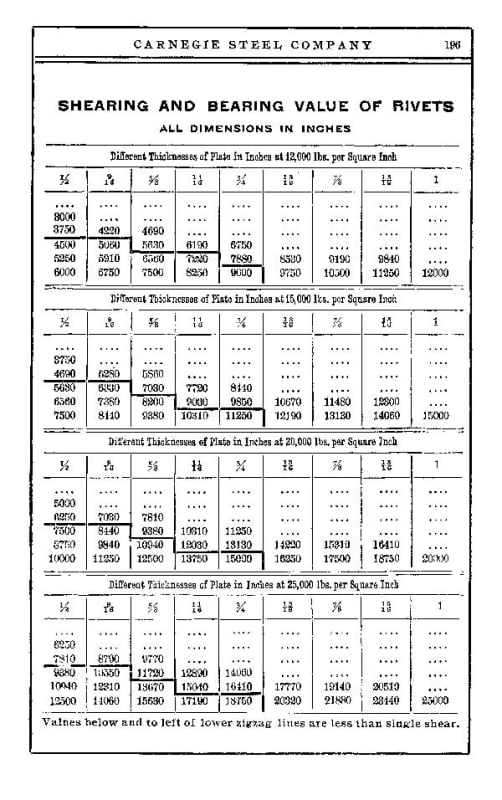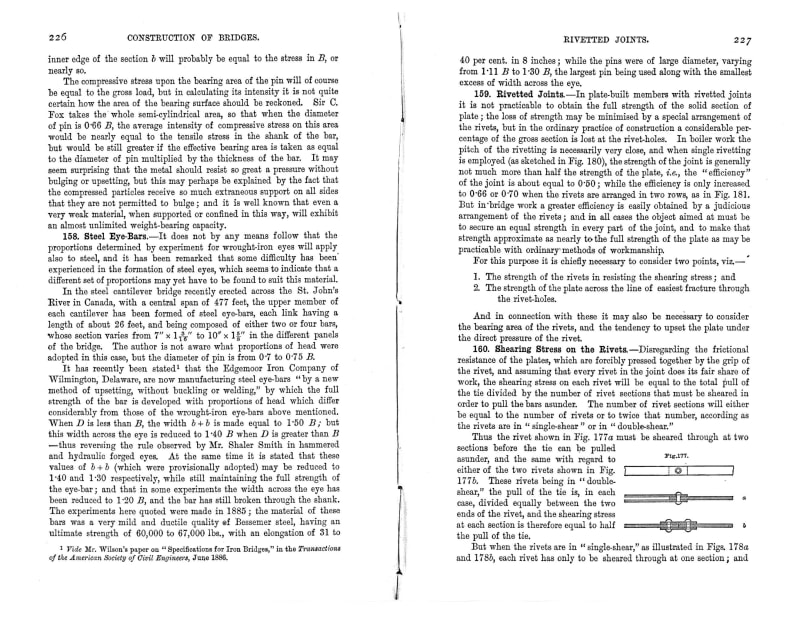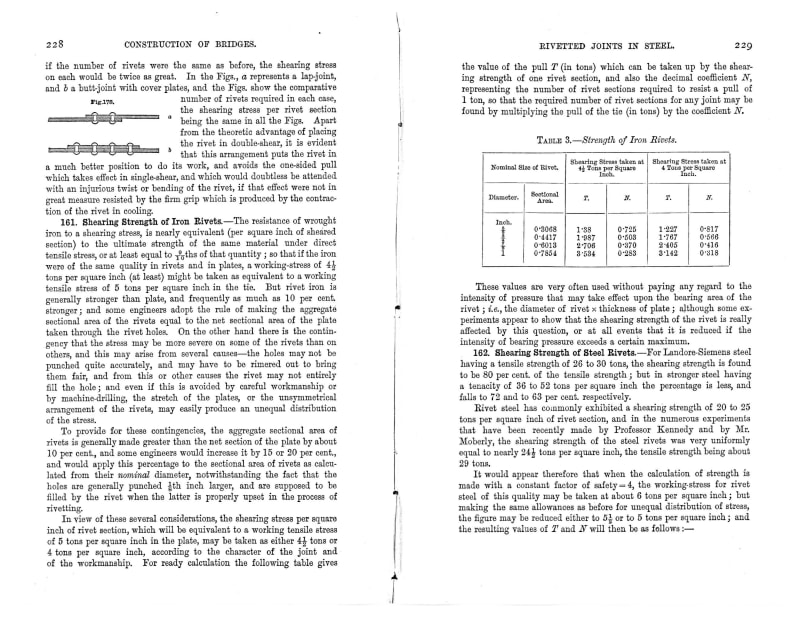DigiAlmond
Structural
Hey everyone! We've been doing some analysis on an existing structure built circa the 1950's. We've got some rivet connections we'd like to analyze. We don't really have anyone at our firm right now with any experience with rivets. I've been exploring the forums here, looked through DG15, looked through older editions of the steel manual, etc. My main hold up with just using the older methods of analysis that I've seen is they seem a bit uber conservative? I know that the the 15th ed. Steel Manual allows one to analysis existing steel with modern method but beyond that I've got nothing. How do I analyze the dang things in a modern context?
Using the tables in DG15 (specifically table 4-3b) I end up with the rivets controlling the connection significantly, before I even apply any sort of safety factor. Heck, the carbon steel bolts also in the connection I'm looking at end up beating them out, which my gut says isn't correct. Doubly so after reading about all the love for rivets people have here.
My best shot has been to treat the rivets as bolts, and working through the connection per chapter J in the steel manual. I did use DG15 table 4-1a to find the strength for A191-49T Rivets, and then utilized C-J3-3/4 to find Fnv and Fnt from the ultimate strength. I am not entirely convinced of this method since, I mean bolts aren't rivets.
Would anyone be willing to share some insights on the "modern" analysis procedure? what sort of safety factors do you employ? any sample calculations any of you would be willing to share? Thanks!
Using the tables in DG15 (specifically table 4-3b) I end up with the rivets controlling the connection significantly, before I even apply any sort of safety factor. Heck, the carbon steel bolts also in the connection I'm looking at end up beating them out, which my gut says isn't correct. Doubly so after reading about all the love for rivets people have here.
My best shot has been to treat the rivets as bolts, and working through the connection per chapter J in the steel manual. I did use DG15 table 4-1a to find the strength for A191-49T Rivets, and then utilized C-J3-3/4 to find Fnv and Fnt from the ultimate strength. I am not entirely convinced of this method since, I mean bolts aren't rivets.
Would anyone be willing to share some insights on the "modern" analysis procedure? what sort of safety factors do you employ? any sample calculations any of you would be willing to share? Thanks!

